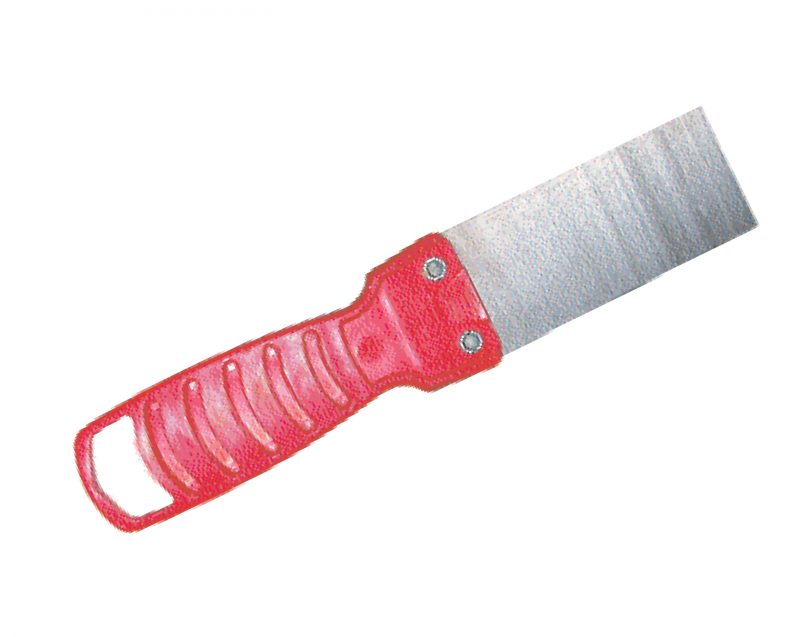FEATURES:
- Molded plastic handle
- Flexible aluminum blade
- Really easy to clean
In the long autumn of 2001, I worked for a finicky ponytailed carpenter, restoring a century-old Victorian mansion across from Buena Vista Park in San Francisco. This man owned several exotic South American stringed instruments, which he strummed thoughtfully from time to time. He also often wore a gauzy sort of shower cap—whether for fashion or function, I was never sure.
One day at break time someone yelled, “Ay, cabrones—café y donuts!” and that was pretty great. But otherwise the days were foggy and the work monotonous. I was largely incompetent, but I tried to do as I was told. Generally this consisted of pulling rusty nails. Other times I chiseled out spots of rotted wood. On some special occasions, I was assigned to fill in those newly dug holes, using a special hardening spackle polymer.
This could have been great. This was for all time. Through this bit of spackling, I would do my part to make the house a home. Three floors up, facing the garden, a spot perhaps two inches square—but it was mine, my chance to shine.
And I always disappointed. I could see the disappointment clouding my boss’s ponytailed face as he reviewed my work. Disappointment didn’t bother me too much—the man was wearing a shower cap!—but doing it over again.… It was a grouchy time in my life—grouchy even without this fanatico de la musica sudamericana. I was in no mood to respackle.
Your problem, he explained, ponytail bobbing emphatically, is that you don’t take care of your putty knife. Look at this. I mean, just look at this.
He was right. My knife was encrusted with a geologic layering of week-old spackle, sawdust, paint thinner, and indeterminate filth. I looked off to the side and didn’t bother to murmur an explanation. There was no explanation, not really. My job was to smooth but my putty knife was bumpy. What did I expect?
Sometimes we don’t know the right tool for a job. Sometimes we do know, but we don’t have that tool. Sometimes we do have the right tool, but it’s encrusted with filth because we didn’t take proper care of it. Sometimes a replacement for that tool costs only $1.49 and can be purchased three blocks away at Roberts Hardware. Sometimes we even go to Roberts Hardware several times a week for various other errands, but still do not pick up a new putty knife, even though we just struggled with our fucked putty knife that morning and we can anticipate further putty knife needs in the coming afternoon. Sometimes we are a mystery to ourselves.
I am much older now. The window of my study looks out over a pastoral New England landscape, where a group of young girls is heading out to the fields for lacrosse practice. Their giggles sparkle in the slanting afternoon rays, and Tom Eliot’s words once...
You have reached your article limit
Sign up for a digital subscription and continue reading all new issues, plus our entire archives, for just $1.50/month.
Already a subscriber? Sign in





